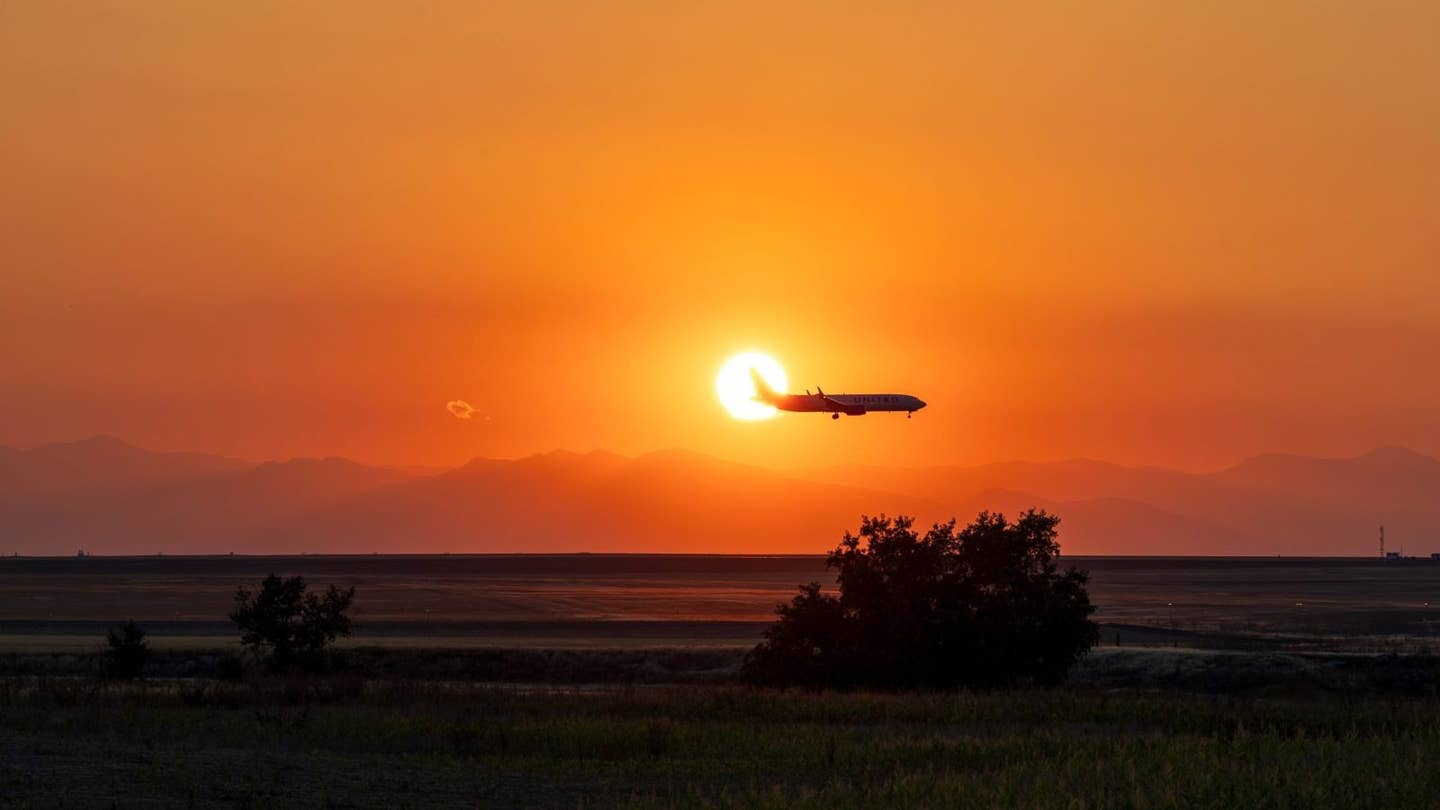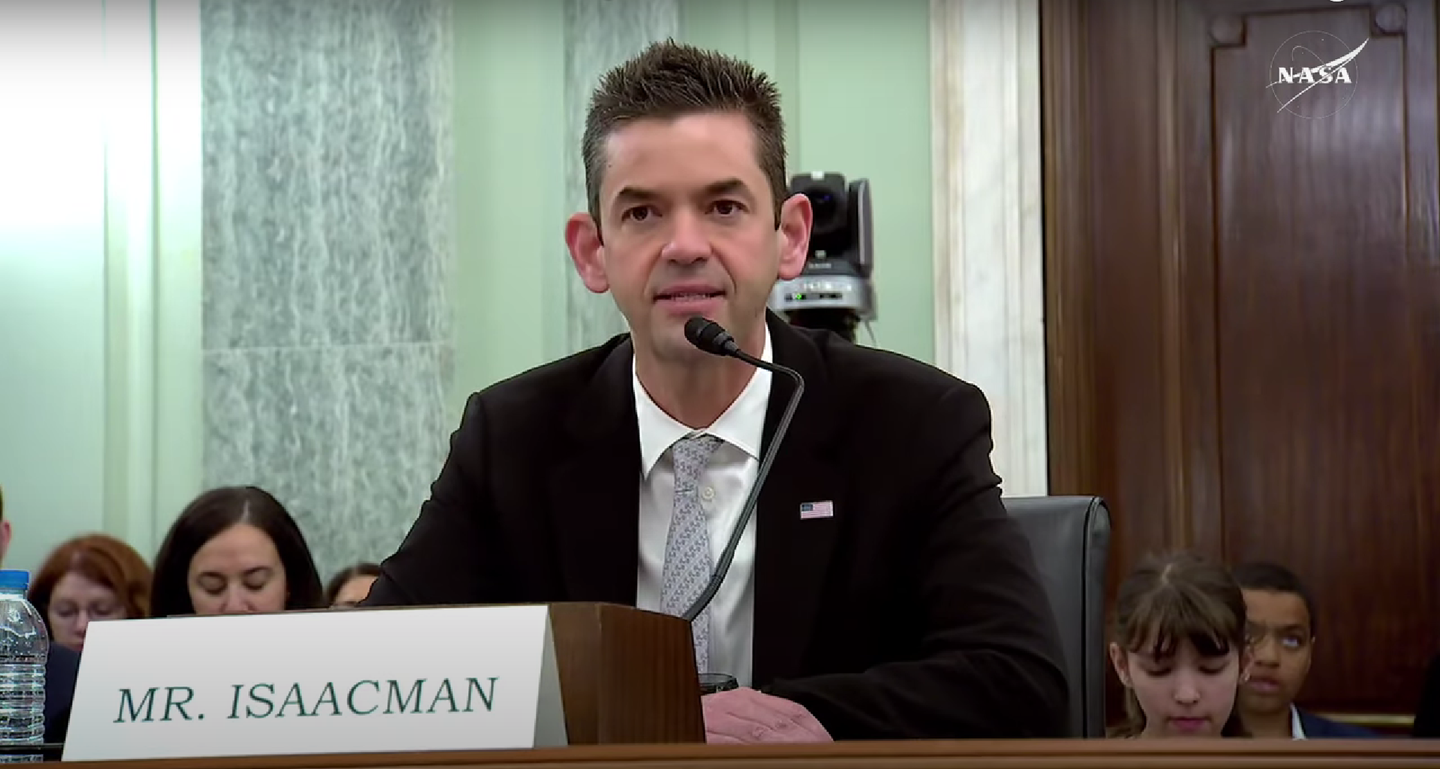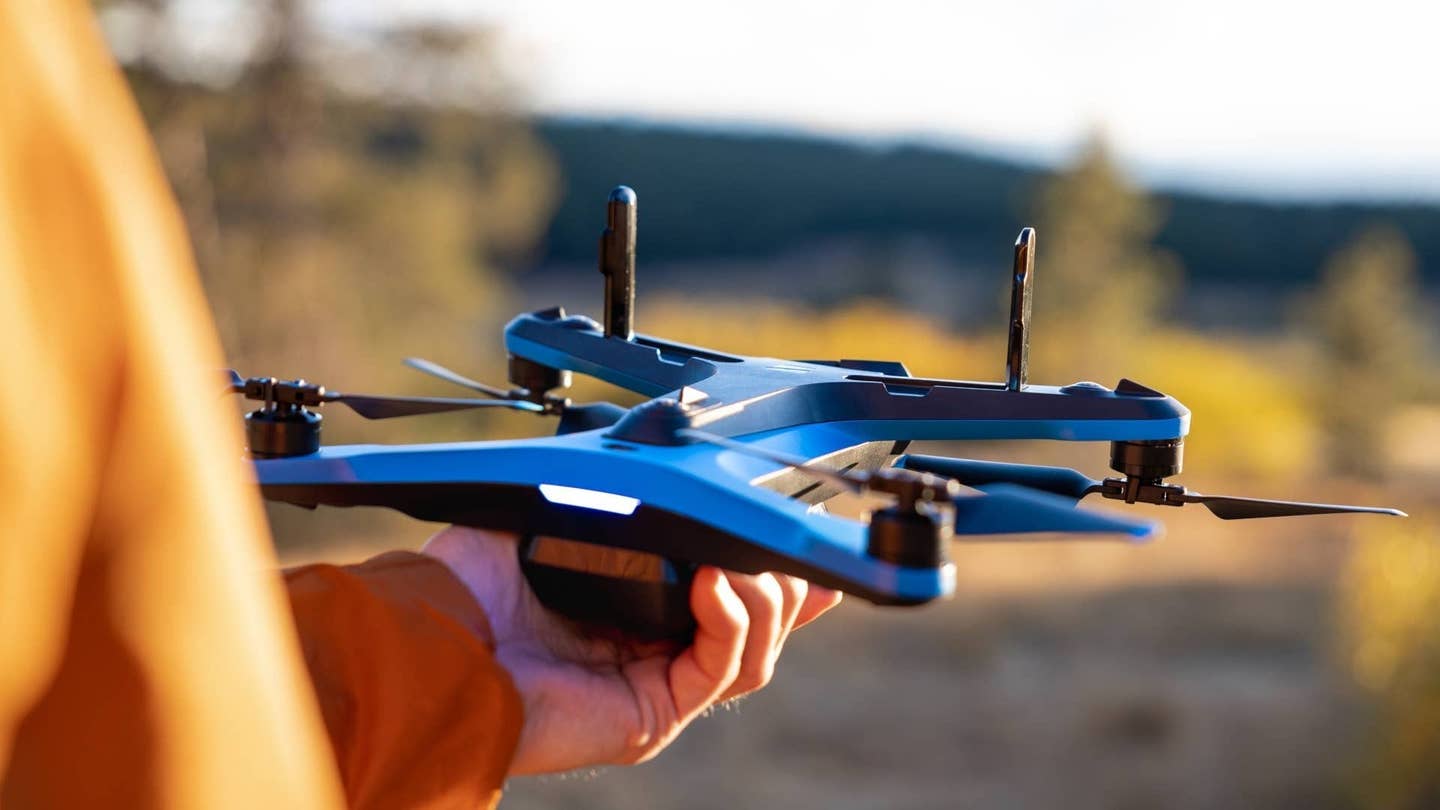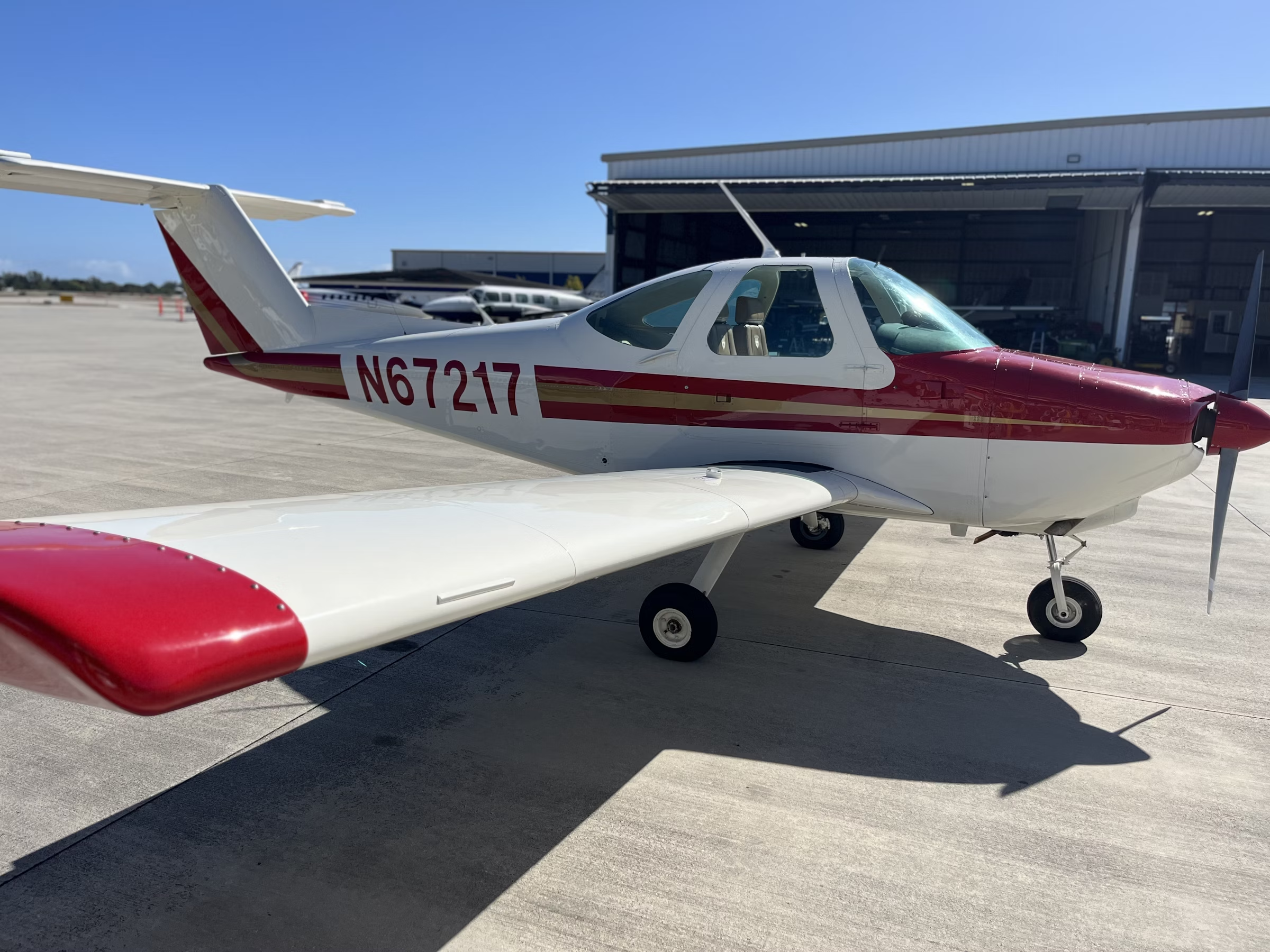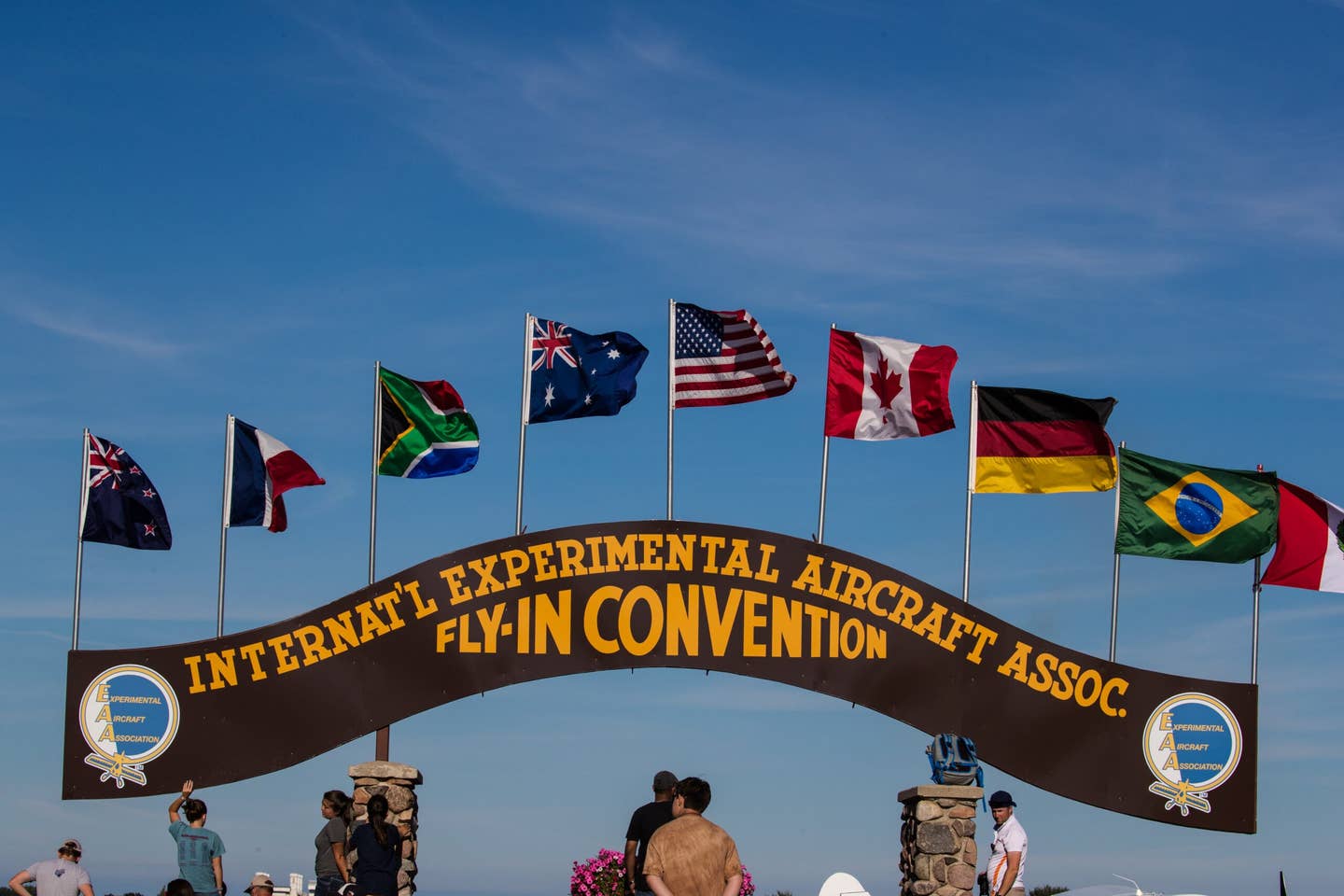Families File Lawsuit Against EAA for 2023 Midair
The lawsuit alleges the accident was the result of the organization not following published FAA procedures for the airspace.
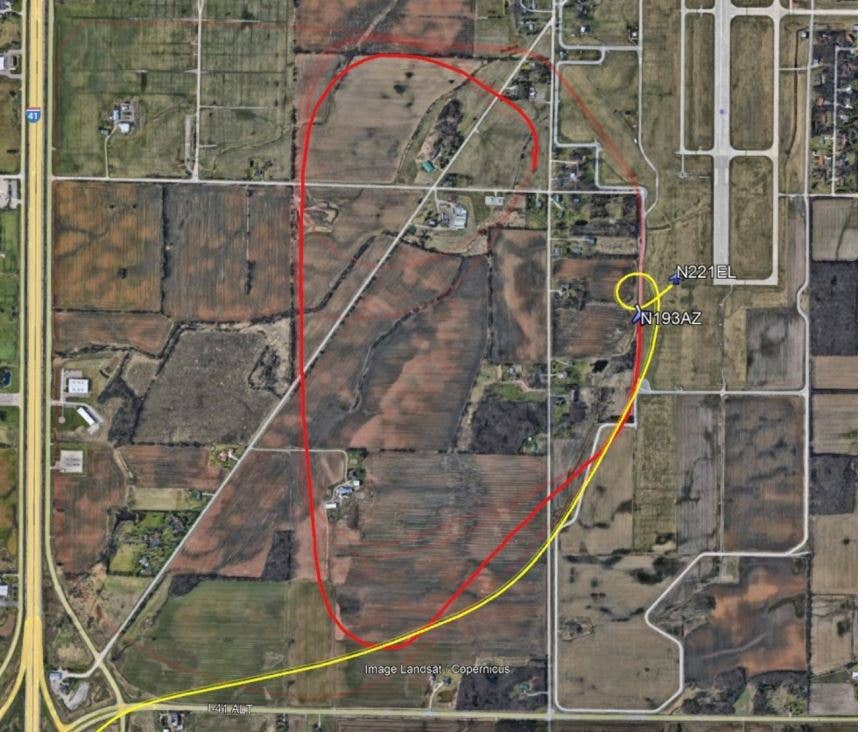
Flight tracks of the helicopter (red) and gyroplane (yellow) involved in a 2023 midair in Oshkosh, Wisconsin. [Courtesy: NTSB]
The families of pilots killed in a midair collision of a helicopter and gyrocopter at AirVenture in 2023 have filed a lawsuit against the Experimental Aircraft Association (EAA) alleging the accident was the result of the organization not following published FAA procedures for the airspace.
The accident happened on July 29, 2023, when both aircraft were operating in the EAA's "Fun Fly Zone," (FFZ), which consists of a grass runway in the ultralight display area of the EAA AirVenture show grounds at Wittman Field (KOSH) in Oshkosh, Wisconsin. In the area were ultralights, light planes, powered parachutes and trikes, hot-air balloons, homebuilt rotorcraft, and light sport aircraft (LSA).
The FFZ was created by the EAA within the Class D airspace that is KOSH, beginning at the surface and extending to 2,500 feet agl.
The accident involved a collision between a Rotorway 162F helicopter and an ELA Eclipse 10 gyrocopter. The gyrocopter was in the traffic pattern and made a 360-degree turn, colliding with the left side of the helicopter as it was on the base leg for landing. The pilots participating in the FFZ are required to be briefed by the FFZ officials on the rules and procedures for operating in the FFZ. One of those rules is that no 360-degree turns are permitted in the pattern.
According to the final report on the accident published by the National Transportation Safety Board (NTSB) on May 16, the probable cause of the accident was "the failure of the gyroplane pilot to see and avoid the helicopter while maneuvering in the traffic pattern. Contributing to the accident was the gyroplane pilot’s performance of a prohibited maneuver in the traffic pattern."
The complaint was filed by Milwaukee-based firm Cannon & Dunphy S.C., which is representing Margaret Peterson, wife of helicopter pilot Mark Peterson, and Patricia Volz, wife of Thomas Volz, who was a passenger on the helicopter. The pair were on a demo flight at the time of the accident.
According to the complaint, the EAA "did not have an FAA waiver, letter or authorization of memorandum of understanding to alter the flight rules affecting Class D airports."
"The FAA purported to waive some of the requirements for Ultralight and Homebuilt Rotorcraft to arrive and depart from the Ultralight/Homebuilt Rotorcraft field in a NOTAM (a notice containing specific information)," the complaint read. "Specifically, the FAA authorized an arrival and departure procedure to be used during AirVenture 2023 but did not authorize any continuing operations for the Ultralight/Homebuilt Rotorcraft field."
It was noted that pilots wishing to operate in the FFZ were required to attend a daily preflight briefing in which they would learn about flight rules and procedures they were required to follow.
The complaint alleges that gyrocopter pilot Eric Bruce made several illegal 360-degree turns despite being repeatedly warned not to by EAA officials and per the complaint by other pilots participating in the FFZ, and yet the EAA continued to allow him to fly.
According to the complaint, “defendant Bruce elected to fly in EAA’s FFZ on Thursday, July 27, 2023, Friday, July 28, 2023, and Saturday, July 29, 2023, and attended a daily briefing on each of those days before flying, signed the attendance sheets, and received a wrist band confirming he had attended the briefings before flying.”
Per the EAA rules for the FFZ, if a pilot observed another aircraft getting too close, they were to do a "go around" and leave the pattern then reenter to fly the pattern to return for landing. The pattern was kept at 300 feet to keep the smaller, slower aircraft away from the larger and faster airplanes using Runway 27.
Video of the accident shows both aircraft at an altitude of approximately 300 feet when they collided.
The helicopter flown by Peterson hit the ground inverted and caught fire. The gyrocopter also came down hard and Bruce and his passenger were seriously injured.
The complaint suggests "the EAA cannot by law arrogate to itself the power to establish a separate ‘airport within an airport,’ and the rules were not and could not be made mandatory by the EAA without authority from the FAA, which was never granted.” However, according to the lawsuit, these rules were discussed at a daily pilot briefing which pilots who desired to use the EAA FFZ during the specified times were required to attend.
The complaint suggested that in addition to failing to get proper clearance and approval from the FAA, the EAA failed to properly and sufficiently enforce its flight safety rules and to provide proper and sufficient air traffic control during the event to instruct pilots who may deviate from the rules to immediately cease and desist, and despite knowing that Bruce had violated the rule by performing a 360-degree turn, allowed him to continue to fly.
"EAA’s negligence, as alleged, was a cause of the subsequent midair collision on June 29, 2023 between Bruce’s gyrocopter and Mark’s helicopter, which resulted in the deaths of Peterson and Volz," it said.
The lawsuit called for a 12-person jury trial.
When asked for its perspective, the FAA told FLYING it does not comment on pending litigation.
The NTSB final report published May 16 listed the probable cause of the accident as pilot error. When reached for comment, the EAA replied, “EAA is aware of the lawsuit and extends its condolences to the families who lost their loved ones in the mid-air collision that occurred on July 29, 2023. EAA denies any negligence and refers all interested persons to the investigation and conclusions reached in the final report of the [NTSB] published May 16, 2024.”
Last month, EAA spokesperson Dick Knapinski said that the organization had made procedural changes in the FFZ for EAA AirVenture 2024, which included a "one strike, you're out" rule that would not tolerate pilots who did not fly by the rules. If a pilot is observed breaking the rules they are not allowed to fly.

Sign-up for newsletters & special offers!
Get the latest FLYING stories & special offers delivered directly to your inbox

